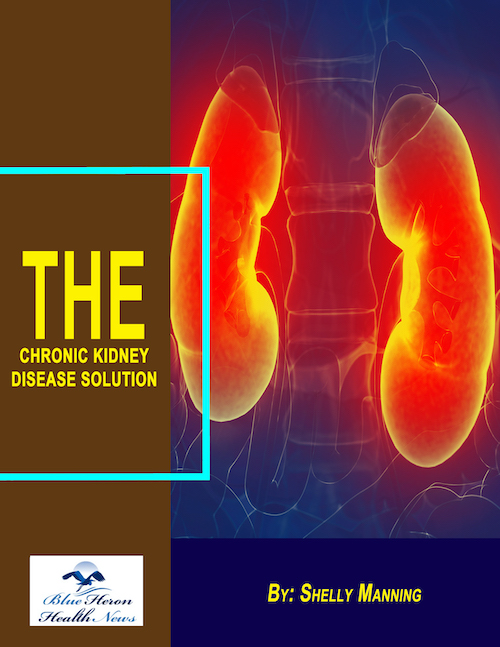The Chronic Kidney Disease Solution™ By Shelly Manning It is an eBook that includes the most popular methods to care and manage kidney diseases by following the information provided in it. This easily readable eBook covers up various important topics like what is chronic kidney disease, how it is caused, how it can be diagnosed, tissue damages caused by chronic inflammation, how your condition is affected by gut biome, choices for powerful lifestyle and chronic kidney disease with natural tools etc.
Role of antibiotics in CKD patients
Antibiotics play a crucial role in the management of Chronic Kidney Disease (CKD) patients, as they are often at higher risk for infections due to various factors such as immunocompromise, catheter use, dialysis, and comorbid conditions like diabetes and hypertension. Proper use of antibiotics is essential, but care must be taken in CKD patients to avoid adverse effects due to altered pharmacokinetics (how the body absorbs, distributes, metabolizes, and excretes the drug).
Role of Antibiotics in CKD Patients
- Infections in CKD Patients:
- Increased susceptibility to infections: CKD patients, particularly those with diabetes, malnutrition, immunosuppressive therapy, or dialysis dependence, are at increased risk for various infections, including:
- Urinary tract infections (UTIs)
- Pneumonia
- Bloodstream infections
- Peritonitis (in peritoneal dialysis patients)
- Skin and soft tissue infections
- Antibiotics are needed to treat these infections, but appropriate dosing and selection are critical to avoid toxicity and ensure effectiveness.
- Increased susceptibility to infections: CKD patients, particularly those with diabetes, malnutrition, immunosuppressive therapy, or dialysis dependence, are at increased risk for various infections, including:
- Antibiotic Choice Based on Renal Function:
- Renal function significantly influences the choice of antibiotics, as CKD affects drug clearance. Kidney dysfunction leads to impaired drug elimination, which can result in drug accumulation, increased toxicity, and adverse effects.
- Antibiotics that are renally cleared (e.g., penicillins, cephalosporins, quinolones, vancomycin, and aminoglycosides) may require dose adjustments or extended intervals between doses, depending on the glomerular filtration rate (GFR).
- Antibiotic dosing guidelines based on eGFR (estimated glomerular filtration rate) should be followed to prevent drug toxicity (e.g., nephrotoxicity or ototoxicity with aminoglycosides) and ensure the therapeutic effectiveness of the drug.
- Common Antibiotics Used in CKD:
- Penicillins: Examples include amoxicillin and ampicillin. These are renally cleared, so dosing adjustments are needed for patients with moderate to severe CKD.
- Cephalosporins: Drugs like cefazolin, ceftriaxone, and cephalexin also require renal adjustments, particularly for patients with lower eGFR.
- Fluoroquinolones: Antibiotics like ciprofloxacin and levofloxacin are commonly used for UTIs, but renal dosing is required.
- Vancomycin: This is an important antibiotic for MRSA infections but needs careful monitoring for serum drug levels (trough levels), especially in patients with CKD, to avoid toxicity.
- Aminoglycosides (e.g., gentamicin, tobramycin): These should be used with caution in CKD patients due to their nephrotoxicity and ototoxicity, especially with prolonged use.
- Trimethoprim-sulfamethoxazole: Used for urinary tract infections and pneumocystis jirovecii pneumonia (PCP) prophylaxis but requires dose adjustment in patients with impaired kidney function.
- Pharmacokinetic Considerations:
- Absorption: In CKD patients, there may be changes in the gastrointestinal system (e.g., delayed gastric emptying), affecting the absorption of some antibiotics.
- Distribution: In CKD, there may be altered protein binding of antibiotics, affecting the free (active) drug concentration.
- Metabolism: While most antibiotics are metabolized by the liver, some are partially metabolized by the kidneys. For example, fluconazole can accumulate in CKD and requires dosage reduction.
- Excretion: Many antibiotics, particularly beta-lactams, aminoglycosides, and fluoroquinolones, are eliminated by the kidneys. In CKD, impaired renal excretion may require dose reductions or extended dosing intervals.
- Management of Specific Infections in CKD:
- Urinary Tract Infections (UTIs): CKD patients are particularly vulnerable to UTIs, which can progress to urosepsis. Empiric therapy typically includes antibiotics like nitrofurantoin, trimethoprim-sulfamethoxazole, or fluoroquinolones, with adjustments based on culture and sensitivity results.
- Pneumonia: Patients with CKD are at a higher risk of developing community-acquired pneumonia (CAP) or hospital-acquired pneumonia (HAP). Broad-spectrum antibiotics, such as beta-lactams, macrolides, or fluoroquinolones, are often used, depending on local resistance patterns and patient condition.
- Dialysis-related Infections: For patients on hemodialysis or peritoneal dialysis, catheter-related infections or peritonitis are common sources of infection. In peritonitis, intraperitoneal antibiotics such as vancomycin and cefazolin are used. For bloodstream infections related to central venous catheters, antibiotic therapy is based on culture results, with broad-spectrum coverage initially.
- Antibiotic Stewardship:
- Avoiding Overuse: Overuse or misuse of antibiotics in CKD patients can lead to the development of antibiotic resistance, which can complicate future infections. Antibiotic stewardship programs are important to ensure that antibiotics are prescribed appropriately, and the duration of therapy is optimized.
- Culture and Sensitivity Testing: Whenever possible, antibiotic treatment should be guided by culture and sensitivity results to select the most appropriate antibiotic and avoid unnecessary broad-spectrum antibiotics.
- Considerations for Dialysis Patients:
- For patients on hemodialysis (HD) or peritoneal dialysis (PD), the route of antibiotic administration (oral, intravenous, or intraperitoneal) must be considered.
- In hemodialysis patients, intravenous antibiotics may be needed, while in peritoneal dialysis, antibiotics may be administered directly into the peritoneal cavity for peritonitis.
- Dialysis clearance of antibiotics: Some antibiotics are removed during dialysis and may require additional dosing after each dialysis session (e.g., aminoglycosides, penicillins).
- For patients on hemodialysis (HD) or peritoneal dialysis (PD), the route of antibiotic administration (oral, intravenous, or intraperitoneal) must be considered.
Special Considerations for Antibiotic Use in CKD Patients:
- Nephrotoxicity:
- Certain antibiotics, such as aminoglycosides (e.g., gentamicin) and vancomycin, are known to be nephrotoxic and should be used cautiously, especially in patients with CKD.
- Renal monitoring (e.g., serum creatinine, glomerular filtration rate, drug levels) is essential during antibiotic therapy to detect early signs of nephrotoxicity.
- Avoiding Drug-Drug Interactions:
- CKD patients often take multiple medications for comorbidities (e.g., antihypertensives, diuretics, phosphate binders, vitamins), increasing the risk of drug-drug interactions.
- Antibiotics like trimethoprim can interact with potassium-sparing diuretics (e.g., spironolactone), increasing the risk of hyperkalemia.
- Some antibiotics, such as fluoroquinolones, can interact with warfarin, leading to increased bleeding risk.
- Adjusting Dosing for Renal Impairment:
- Dose reduction or adjustment of dosing frequency based on renal function is necessary for most antibiotics in CKD patients.
- Guidelines and renal dosing calculators should be used to determine appropriate doses for patients with impaired kidney function.
Conclusion
Antibiotics are essential in managing infections in CKD patients, but the use of antibiotics must be carefully managed due to the altered pharmacokinetics in these patients. Renal function plays a critical role in the choice, dosing, and monitoring of antibiotics, and appropriate adjustments are necessary to avoid toxicity and ensure the effectiveness of treatment. Antibiotic stewardship, including the use of appropriate antibiotics based on culture results, careful monitoring for side effects, and avoiding overuse, is crucial to the optimal management of infections in CKD patients.
 The Chronic Kidney Disease Solution™ By Shelly Manning It is an eBook that includes the most popular methods to care and manage kidney diseases by following the information provided in it. This easily readable eBook covers up various important topics like what is chronic kidney disease, how it is caused, how it can be diagnosed, tissue damages caused by chronic inflammation, how your condition is affected by gut biome, choices for powerful lifestyle and chronic kidney disease with natural tools etc.
The Chronic Kidney Disease Solution™ By Shelly Manning It is an eBook that includes the most popular methods to care and manage kidney diseases by following the information provided in it. This easily readable eBook covers up various important topics like what is chronic kidney disease, how it is caused, how it can be diagnosed, tissue damages caused by chronic inflammation, how your condition is affected by gut biome, choices for powerful lifestyle and chronic kidney disease with natural tools etc.
